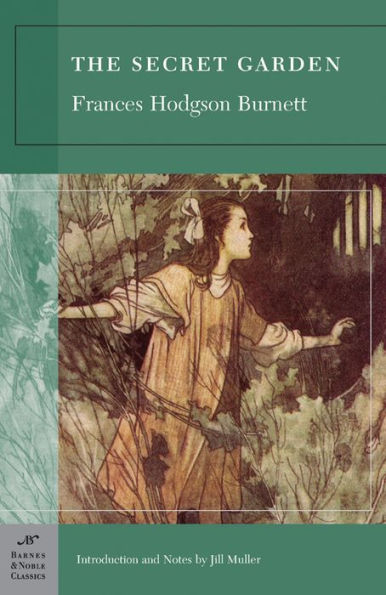Read an Excerpt
From Jill Muller’s Introduction to The Secret Garden
In The Varieties of Religious Experience (1902), William James, brother of Burnett’s friend Henry, describes a new and uniquely American contribution to religious thought and practice that he calls “the religion of healthy-mindedness.” The basis of the movement, also known as the “new thought,” was a belief in the power of the human mind and the ability of faith to influence events in the physical world. Attributing the rise of this philosophy to the “extremely practical turn of character of the American people,” James observes:
The leaders in this faith have had an intuitive belief in the all-saving power of healthy-minded attitudes as such, in the conquering efficacy of courage, hope, and trust, and a correlative contempt for doubt, fear, worry, and all nervously precautionary states of mind (p. 88).
Noting that practitioners claim remarkable effects on their physical health, he records that “one hears of . . . people who repeat to themselves, ‘Youth, health, vigor!’ when dressing in the morning, as their motto for the day” (p. 88). This late-nineteenth-century meld of religion and therapy, with roots in the writings of, among others, Swedenborg and Emerson, found expression in a range of spiritual and self-help movements from Christian Science to Norman Vincent Peale’s 1952 classic The Power of Positive Thinking. Christian Science, a sect founded in 1866 by Mary Baker Eddy, claimed that physical illness was illusory and could be cured by right mental attitudes and a true understanding of the scriptures. Among those who were profoundly affected by the teachings of Mary Baker Eddy were Frances Hodgson Burnett and her son Vivian. Unlike her son, Frances never formally embraced Christian Science, but, as Vivian Burnett observed in The Romantick Lady, his 1927 biography of his mother, “her method of thought, consciously or unconsciously, was influenced importantly by what she learned from Christian Science” (p. 376). Although we may question Vivian’s specific claim that The Secret Garden “is generally credited with being a Christian Science book” (p. 377), the novel is certainly a devout testament of the Jamesian “religion of healthy-mindedness.”
Frances Hodgson Burnett first encountered the new theories of “metaphysical” healing in 1885 when her friend Louisa M. Alcott, author of Little Women, persuaded her to seek treatment for nervous exhaustion from Mrs. Newman, a leading practitioner of the so-called Boston Mind Cure. Burnett was so impressed by Newman that she stayed in Boston for a month under her care. Later in her life, after the best European doctors proved unable to cure her son Lionel of tuberculosis, she turned increasingly to alternative healers. Two failed marriages to physicians did little to restore her faith in conventional medicine. Her low opinion of the medical profession is expressed in The Secret Garden, in her unsympathetic portrayal of Colin’s uncle, Dr. Craven, who is unable to cure, or even correctly diagnose, his nephew’s largely psychosomatic illness and indeed secretly hopes for the boy’s death. It is Mary Lennox who brings about Colin’s cure by introducing him to the healing power of the secret garden.
In a 1909 New York Times interview Burnett described her belief in a divine energy that could be channeled by the human mind:
We are today mysteriously conscious of this strange magic in the air that we will call the beautiful thought. It has so revitalized and stirred our souls that there has been in its most recent evolution a magnetic force that seems to me must almost stir the dead in their graves (Gerzina, p. 259).
The Secret Garden depicts this “beautiful thought” at work in the cure of Colin Craven. Until he encounters his cousin Mary, Colin is a victim of the power of negative thinking. He has spent his whole life surrounded by people who resent his very existence, blaming him for his mother’s death in childbirth and expecting him to become a hunchback like his father. The pessimistic atmosphere around him provokes an imaginary illness so overwhelming that he is actually unable to walk. Colin’s recovery begins when his cousin refuses to accept his negative beliefs, introducing him to the magic of the secret garden and encouraging him to have faith that, like the flowers in the garden, he too can grow and flourish. Burnett is so determined to propagate her belief in the power of thought to change reality that at one point, near the end of the novel, she even interrupts the narrative to address young readers directly with her explanation of the relationship between mind and body:
One of the new things people began to find out in the last century was that thoughts—just mere thoughts—are as powerful as electric batteries—as good for one as sunlight is, or as bad for one as poison. To let a sad thought or a bad one get into your mind is as dangerous as letting a scarlet fever germ get into your body (p. 229).





